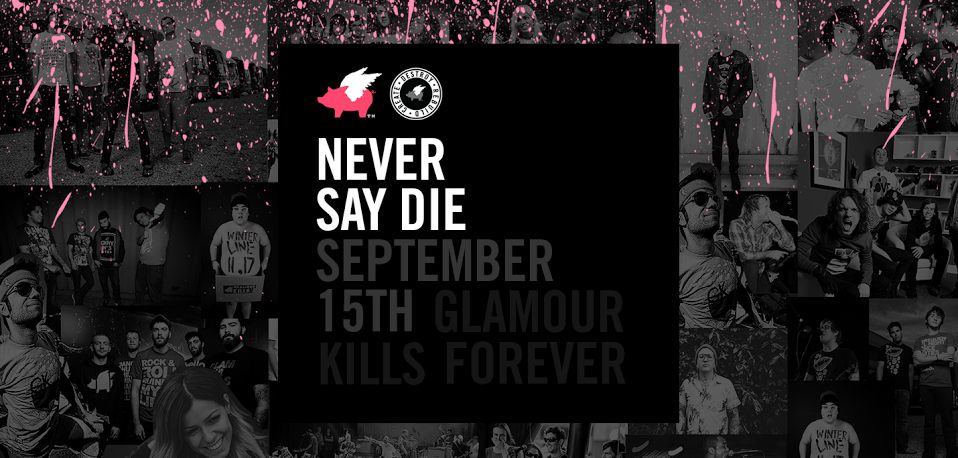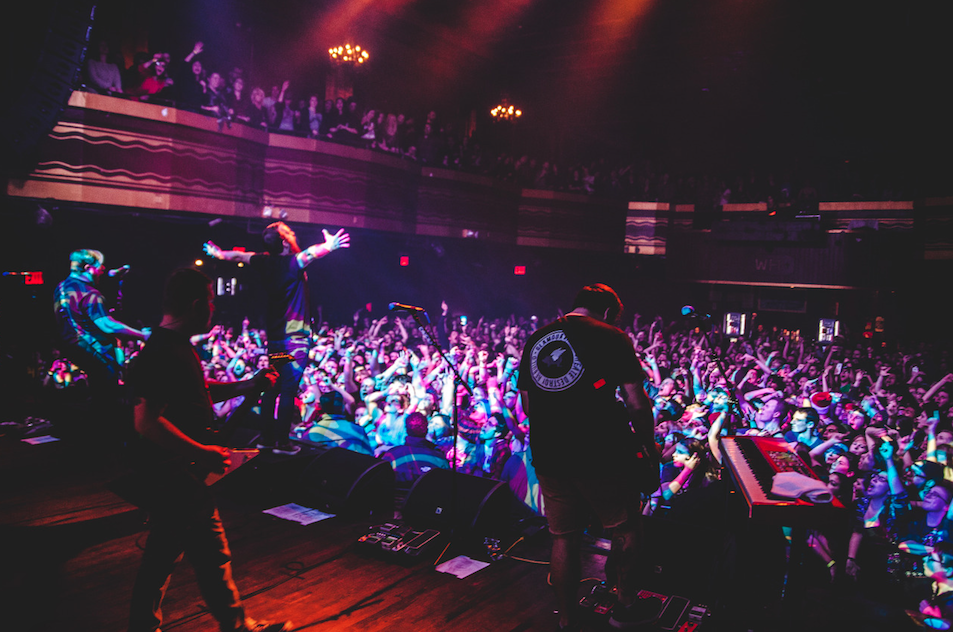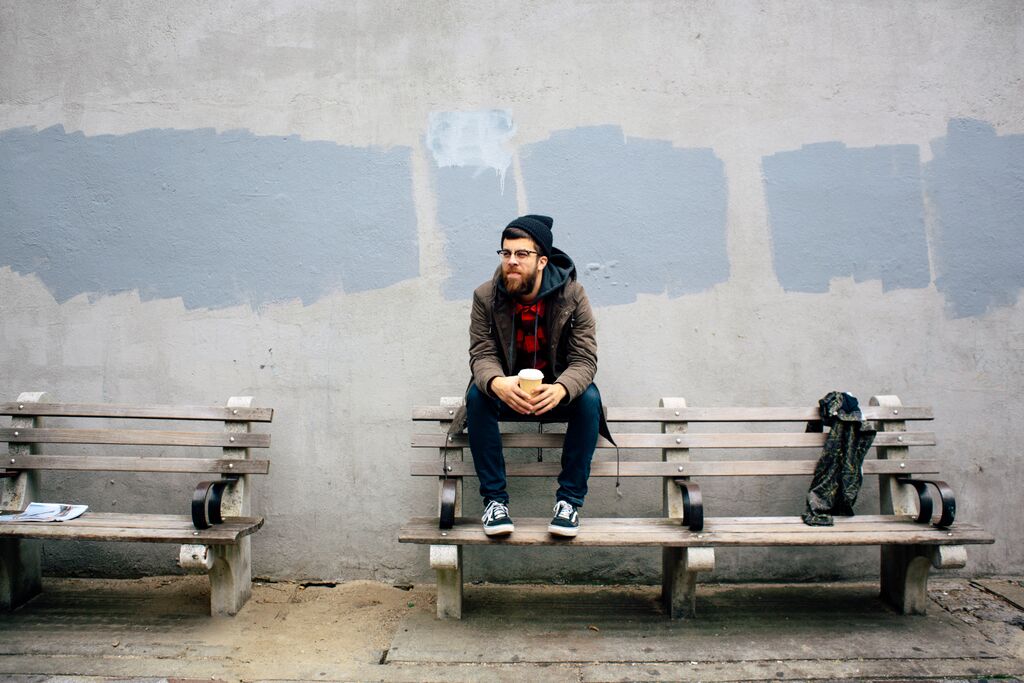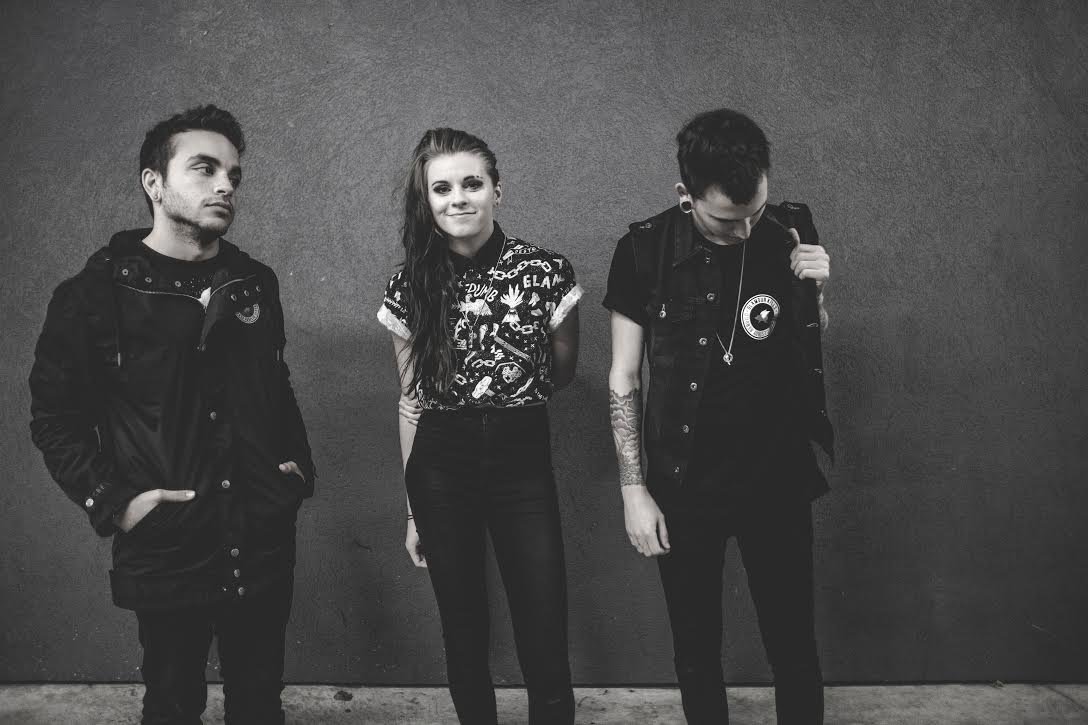
It started when the firemen kicked the door in. At least that’s how the conversation started. It’s a Friday afternoon, after lunch but before happy hour. I have a glass of sparkling lemonade and Mark Capicotto (Marky), the founder and owner of Glamour Kills Clothing, has plans for the rebirth of his brand spread out in front of him. And that’s a very good thing.
Since GK first strutted onto the scene in 2004/2005 it has become a symbol, representing the look of pop-punk but also, unexpectedly, the sound of alt-rock. The brand’s growth is a twin for the successes of several of our most loved bands, from All Time Low to The Wonder Years. But two years ago, just short of a decade later, the journey derailed. Today, Glamour Kills has fought its way back. That’s where the firemen—figuratively—come in.
From the Ashes
Three weeks before our first chat the Glamour Kills office barely dodged a fire. The blaze completely consumed the design studio below them, sending smoke and firemen upstairs to invade the office. In the end, firefighters contained the flames to the first floor, but you can’t deny the metaphor. The firemen, similar to the betrayal of a major business partner, kicked the door in (more on that soon), and in the year leading up to that Glamour Kills had completely shut down—their website, their NYC offices, production, everything. So it’s no joke when Marky and I smile and compare the fire downstairs to the brand’s current “rise from the ashes.”

“Came out swinging, from a [Poughkeepsie] basement”
The Wonder Years said it perfectly with the above quote from “Came Out Swinging”. Marky didn’t aspire to build his life around printing t-shirts when he was eighteen. Back then the New York native had only recently said goodbye to high school, but hadn’t left his parents’ basement quite yet, and he wasn’t sure what should come next.
“At that time I didn’t think it would be what it [is] today, but I knew I wanted to have something that I could call my own.”
Here’s what else Marky knew: He learned better from doing than from structured learning environments; his friends Rob and Andy owned a print shop called American Icon; and Marky had the graphic design skills paired with an illustration style that kids connected with. So he said, “Fuck it. Let’s give it a try.”
Bamboozle’d
For the first two years of Glamour Kills, Marky worked a variety of jobs you could easily imagine in a movie montage. During the daytime he delivered pizza, and he merchandised Pepsi displays—building Super Bowl cutouts and stocking them with sodas. In the evenings, the then twenty year old, worked alone until 3AM. That’s when Bamboozle 2005 happened. The call for fans to join GK at the festival went up on MySpace and the response seemed to bubble over and keep growing. Yet that didn’t prepare Marky or his handful of friends/workers for the moment the festival kicked off. “When they opened the gates at Bamboozle and I watched a flood of kids run into the festival grounds. We were set up across from the main stage and from the gates, so you could see everybody spewing in. And kids were rushing to the Glamour Kills tent. Like, they were [bypassing] their favorite bands’ tents, they weren’t going to concessions or anything like that. They were coming for Glamour Kills. At that moment I was like, ‘oh my goodness, did we bring enough stuff? Is this for real?’”

That weekend, with his sister Michelle at his side, Marky and GK sold out of everything. The brand ended up earning more during the three days of Bamboozle than in the entire prior year. Marky isn’t shy in saying he called his mom to share the “incredible” news. He and Michelle were starting to see the draw of GK and what it could become.
“It was very surreal. I still to this day– It’s something that I struggle with now. I don’t understand why people gravitate to me or the brand. Like, what’s the allure there? And a lot of people tell me it’s because I’m honest and I have a commentary about what’s going on. And the vessel is t-shirts or art.”
What is it about Glamour Kills?
Marky’s internal search to answer the question, What is it about Glamour Kills? directly mirrors the research of those companies who work furiously through the night, like pop-punk Slugworths, to emulate GK’s success. As Marky suggests, on a first look you might attribute the clamor for GK t-shirts to the artists and bands that choose to wear them. And that’s a valid point; Marky utilized his own research and resources, including MySpace pages, to write to bands with offers to style them. He says he literally fan-boyed in his emails and posts. The idea of a mutually beneficial exchange—the artists got clothes no one else had, GK got exposure—appealed to the bands, and they accepted.

The next thing fans knew, Just Surrender and Matchbox Romance (who were already Marky’s clients) were rocking GK along with I Am The Avalanche and Boys Like Girls. Which also led to All Time Low rolling with the flying pig. This certainly fueled wider awareness of the brand, especially in the case of All Time Low. The brand and the band grew up together, reaching new milestones in their success in tandem. It’s a business relationship that blossomed into a great friendship. Marky can’t help but chuckle in calling his bond with the ATL boys, “thick as thieves” and “we’d get married if it was legal.” GK <3 ATL.
However, Marky digs deeper than the allure of celebrity. As he says, “…bands wear other products too, from other smaller clothing companies. I’ve seen a million of them replicate what we’ve done. Or try to replicate. I think it’s the community of it. I think it’s the message of– I lived and breathed in this punk music community. I grew up in it. I’m one of them. And it shows in the designs and the way everything has ever been approached about the company. It’s real and it’s honest and it has messages that hit home for a lot of people. I know it hits home for me. Every time I design it has to mean something to me. You can have the best design in the world but does it have a, quote unquote, soul? Kids understand there’s no bullshit to Glamour Kills.”
Rugrats and TLC and Rob Dobi
When it comes to the GK aesthetic, I ask Marky which Saturday Morning cartoons he watched. He shouts out Rugrats and Doug quickly, but on deeper reflection his thoughts switch over to album art. In his regular life Marky likes things to be straight, neat, organized. Things have to line up. His design style isn’t any of that. “Art is the freedom to be whatever the fuck you want it to be.” The classics aren’t what inspire Marky; he grew up collecting CD art and now he buys records because, “Just as important as it was for me to listen to the CD, was for me to dive in and see how they laid it out and what the inner designs were.”
Therefore it all makes sense when I learn that the album art for Bad Hair Day by Weird Al Yankovic and CrazySexyCool by TLC are a big influence on the Glamour Kills style, as is the work of rock-design-god, Rob Dobi. Dobi’s FullBleed stuff spoke deeply to Marky and it pushed him to connect with the designer. On Marky’s desk, close to hand, is a portrait that Dobi did of him. It’s another one of those things that mean something.
Based on these inspirations and including Marky’s sense of style, it’s easy to see how GK’s first big design happened. The t-shirt sported a hot pink grid along with handwritten black words in watercolor. It’s message was based on the Seven Deadly Sins:
“Success – Money – Fame – Fortune – Desire – Wealth – Envy – Power – Sex – Indulgence – Stardom – Drugs – Greed – Jealousy – Addiction – The Glitz, The Glamour, It Kills”.
The wording, like the design, are Marky originals.
Bad Romance, Good Breakup:
The Years with “That One Key Retailer”
When the New Year’s Eve ball dropped on 2009, things were going great for Glamour Kills. They’d built a lucrative niche in the industry through their great designs and their maverick style of marketing—like a weekly GK internet show and their interactive use of social media. “If people are buying your product, they deserve the right to look you in the face.”

One of the marketing standouts was their Glamour Kills Zine. The Zine mashed up the best elements of a fashion lookbook with a music magazine, in order to tell industry stories. Marky says, “I realized a lot of higher end brands are all, like, forests and fashion forward; that’s not who our customer is. Our customer is the kid who’s going to shows, going to Warped Tour. Their story is the same as mine. The same as the singer of We Are The In Crowd. The same as the signer of Neck Deep. They [fans] wanna hear those stories. They want to be a part of that story.” And that’s precisely what the Zine did. It took artists’ favorite stories and their points of inspiration and made those sentiments available to fans.
In this way, Glamour Kills truly became the architect of their own subculture. In the grand set-up of cause and effect, it’s no wonder big retailers chose that moment to knock on GK’s door. However, Marky was very selective in who he invited in. He wanted to work with a retailer that understood his commitment to the punk community; the integrity of the work and the work ethic also mattered. The best choice, for Glamour Kills, seemed to be an apparel seller that we’ll call KRP (key retail partner). KRP matched up the best with GK amongst retailers like Hot Topic, PacSun, Tillys, etc. KRP stood behind their brands and Marky says they extended that guarantee to Glamour Kills, which included a promise to help the young brand flourish. While in talks, Marky was most interested in the KRP connection to various alt-cultures—such as the hip-hop, skater, and snowboard scenes. Glamour Kills had the opportunity to fit in with KRP’s offerings yet bring a new scene into the mix. That’s how the two companies agreed to a deal.
By 2014 product licensing and sales through KRP rose to comprise 75% of Glamour Kills’ business. Back in 2013 GK began to recognize the need to diversify. Not due to any problems, but because the company had grown to include a full staff and Marky wanted to ensure his staff would be well taken care of. Their reliance on KRP as a primary source of revenue was worrisome. Together the two companies created high-end fleece, backpacks, jackets, and a number of patterns. And it was great. Until the day KRP went public.
Marky recalls a shift from a brand-friendly store to a company trying to compete with fast fashion retailers like Forever 21, especially in the girls/juniors side of things. However, the street fashion of alt-culture “was a little edgier.” At that point GK consistently held a top seller spot within the KRP girl/juniors department and had held that rank for a few years. “I think we really had the aesthetic they were looking for,” Marky says.
“I think we really had the aesthetic they were looking for.”
Historically, something happens when companies stop being run by creatives and start being run by accountants. The craft often matters less, while the bottom line matters more. This may explain the series of events Marky recounts next:
In 2014, the working relationship between GK and the KRP private label department changed. The two teams had previously worked hand in hand as a unified force, but then KRP began to utilize various prints and designs GK’s illustrators had created without Marky’s permission. That permission thing is big. Marky says in some instances, trademarked Glamour Kills designs were given slight makeovers, then were sold under KRP’s private label. Oftentimes in direct competition against original GK merchandise, but at a reduced price. “There were less and less brands on their girls’ site but we were seeing a lot of things that looked eerily similar to the products we used to sell that they’re telling us aren’t selling well. And what we’re looking at is our shirts that cost $26.99 sitting next to a buy-one-get-one-half-off shirt or a $19.99 KRP option that basically took a phrase or a pattern or an element and changed it around ever so slightly.” What Marky described is called underselling, and while it’s not illegal it would’ve gone against the promise of support and integrity that initially cemented the relationship between the two companies.

In response, Glamour Kills sought legal advice. Perhaps more troubling than what Marky saw as an attempt to “suck the aesthetic out of what [GK] was,” he notes that KRP placed large product orders only to shrink them after Glamour Kills had gone into production… and they kept shrinking them. This meant a major loss because funds were going into producing product that GK no longer had a place to sell, which left the company with tons of extra merchandise and no way of moving it. Through correspondence with the retailer, Marky was told “sell through” wasn’t good, but he says those numbers didn’t add up; Glamour Kills was bigger than ever. Eventually KRP orders dwindled down to nothing. The combination of expenditure and shelved product meant GK couldn’t move forward with new orders from their other vendors or on their site.
This culmination of factors became the spark that lit the metaphorical fire from the beginning of our conversation. Glamour Kills had to shut down completely.
—
The saga continues tomorrow in Part 2 of The Rise, the Raze, & the New Age of Glamour Kills

